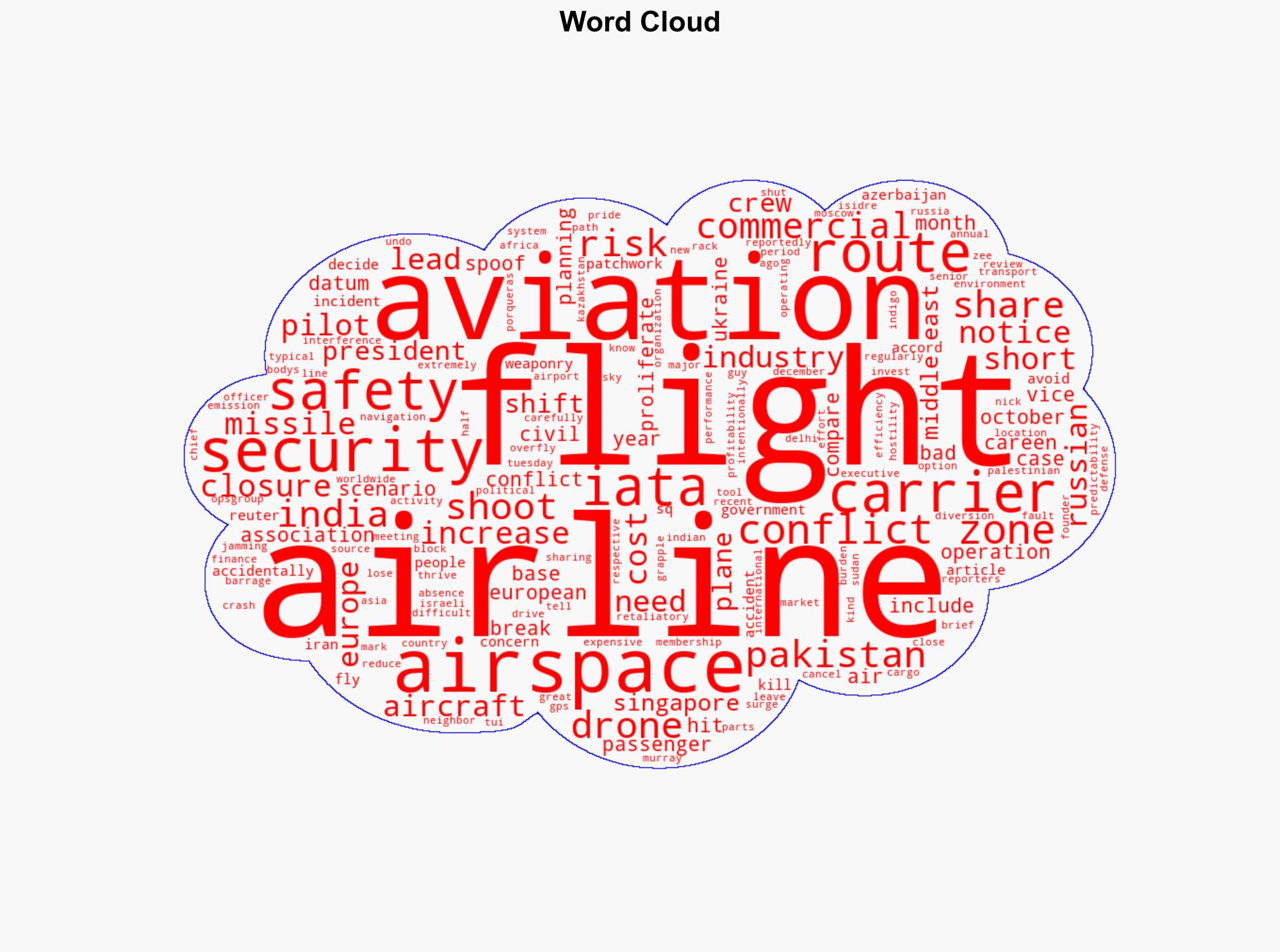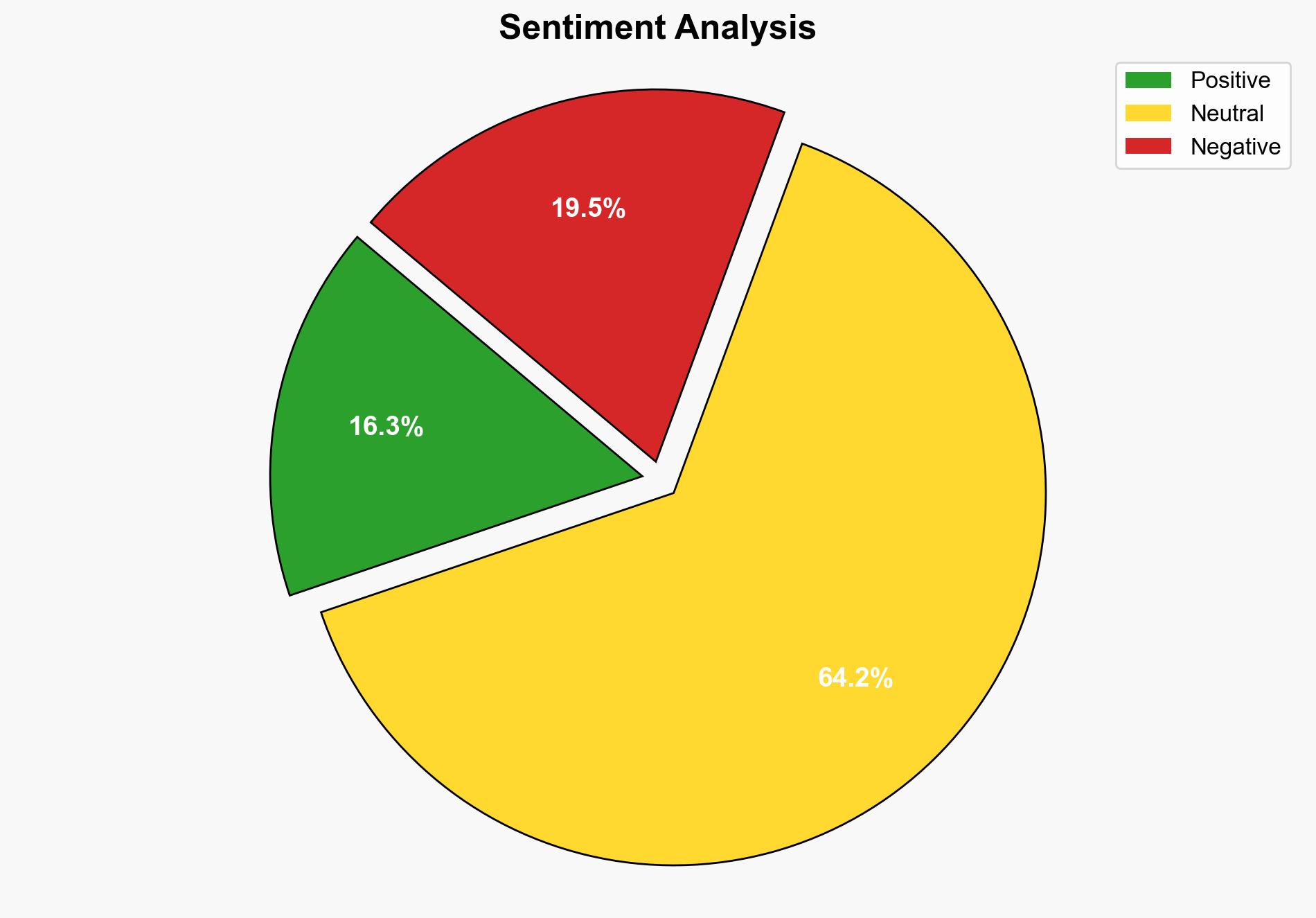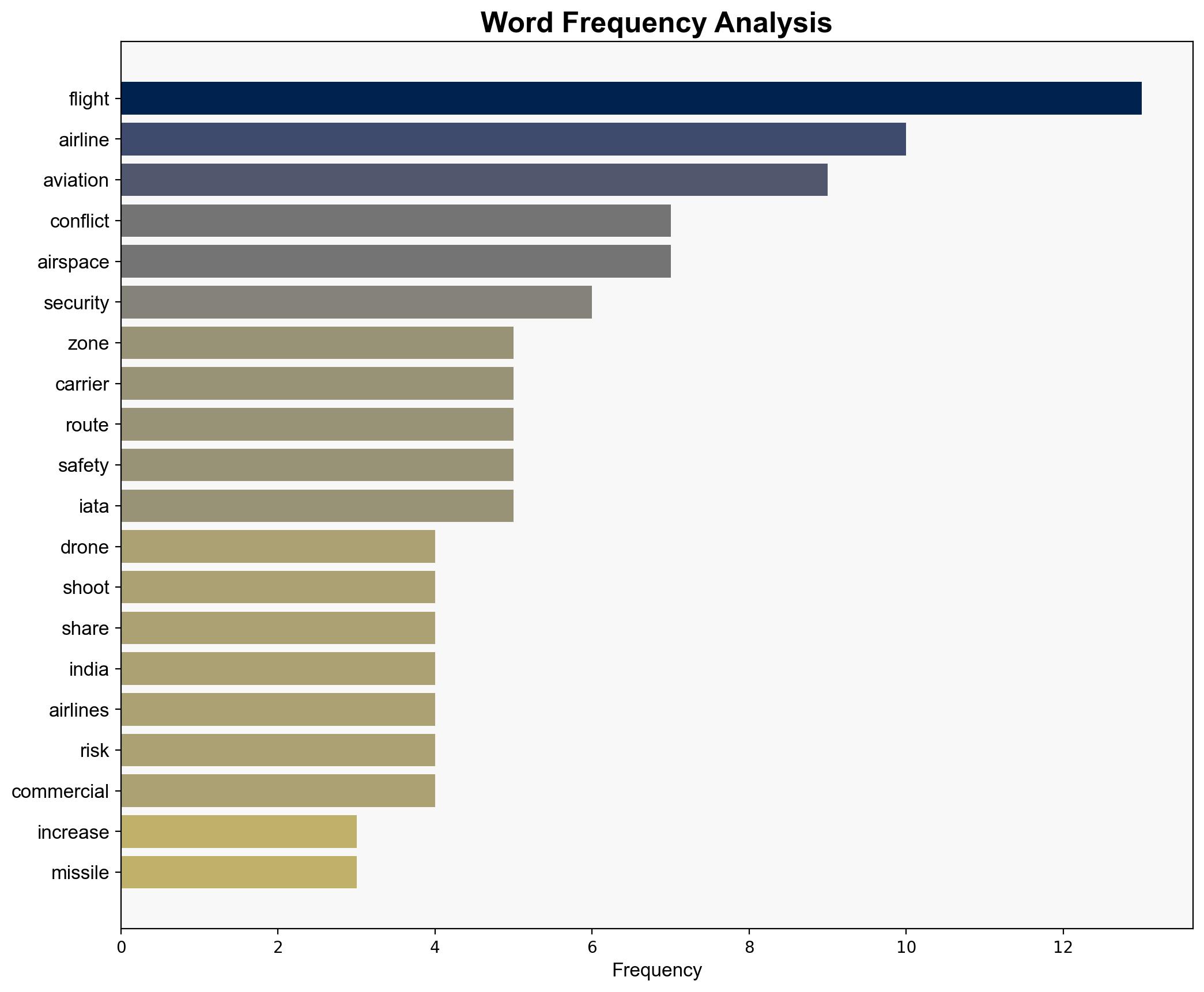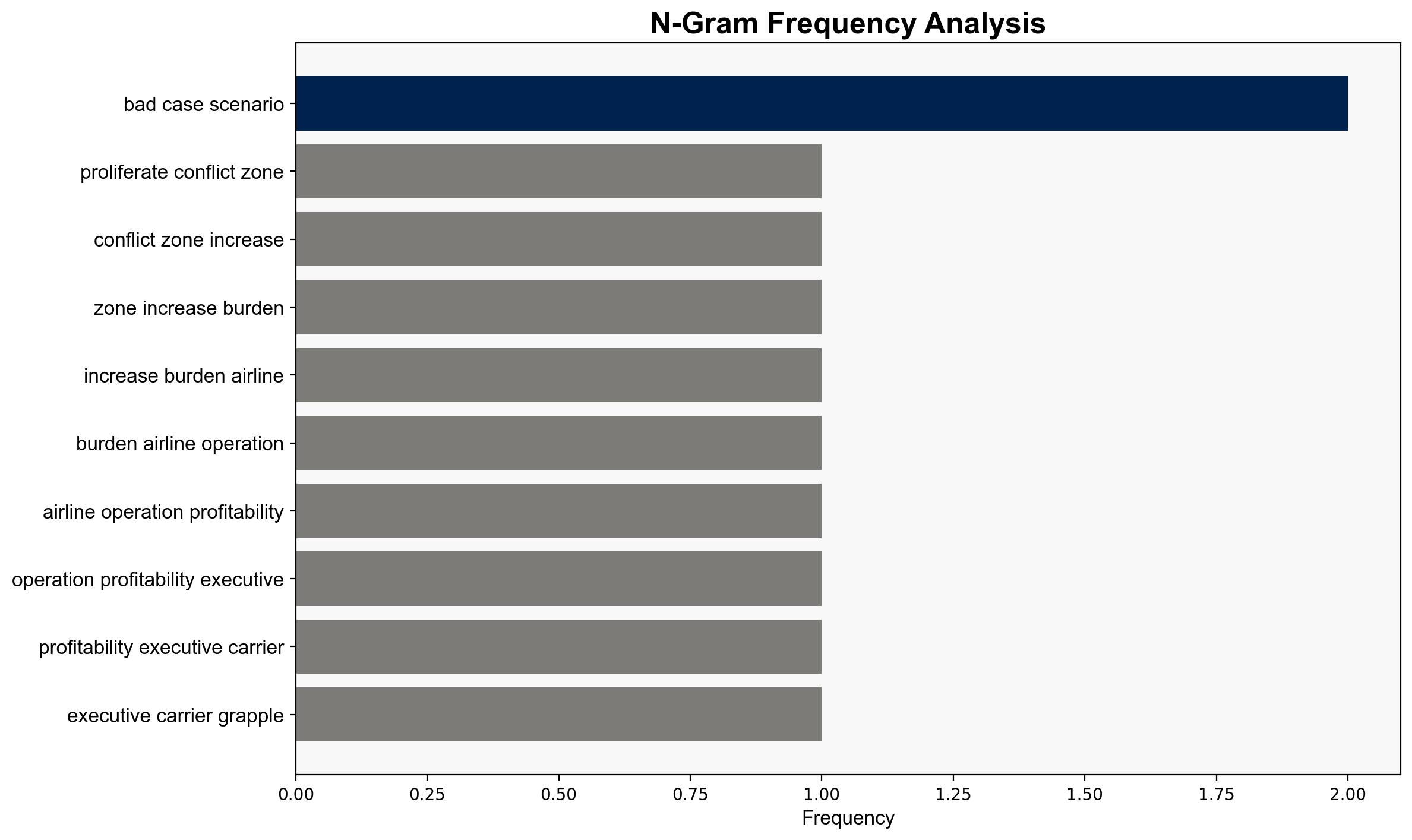Expanding Missile Threats and Airspace Closures Are Straining Airlines – Insurance Journal
Published on: 2025-06-11
Intelligence Report: Expanding Missile Threats and Airspace Closures Are Straining Airlines – Insurance Journal
1. BLUF (Bottom Line Up Front)
The proliferation of missile threats and airspace closures is significantly impacting global airline operations, leading to increased costs, reduced profitability, and complex routing challenges. Airlines are forced to navigate unpredictable environments, which strain resources and require enhanced security measures. Strategic coordination among governments and aviation bodies is critical to mitigate these risks and ensure the safety and efficiency of air travel.
2. Detailed Analysis
The following structured analytic techniques have been applied to ensure methodological consistency:
Causal Layered Analysis (CLA)
Surface events include frequent airspace closures in regions like Russia, Ukraine, and the Middle East due to missile and drone threats. Systemic structures involve the geopolitical tensions and retaliatory airspace restrictions between countries such as India and Pakistan. Worldviews reflect the prioritization of national security over aviation efficiency, while myths underscore the perceived invulnerability of commercial aviation.
Cross-Impact Simulation
The closure of airspace in one region often leads to increased traffic and congestion in neighboring areas, escalating operational costs and risks. Economic dependencies, such as reliance on specific air routes, further complicate airline strategies.
Scenario Generation
Divergent narratives include a scenario where increased international cooperation leads to standardized airspace management and another where escalating conflicts result in widespread airspace fragmentation.
Bayesian Scenario Modeling
Probabilistic assessments suggest a high likelihood of continued airspace disruptions, with potential for increased incidents involving commercial aircraft in conflict zones.
3. Implications and Strategic Risks
The ongoing airspace closures pose significant risks to airline safety and financial stability. The potential for accidental or intentional targeting of commercial flights remains a critical threat. Systemic vulnerabilities include reliance on outdated navigation systems susceptible to spoofing and jamming. Political tensions exacerbate these risks, with cascading effects on global trade and tourism.
4. Recommendations and Outlook
- Enhance international collaboration to establish unified airspace management protocols.
- Invest in advanced navigation technologies to mitigate risks from GPS spoofing and jamming.
- Develop contingency plans for rapid rerouting and emergency response in conflict zones.
- Scenario-based projections: Best case involves improved diplomatic relations reducing airspace closures; worst case sees increased regional conflicts leading to widespread disruptions; most likely scenario includes continued sporadic closures with gradual adaptation by airlines.
5. Key Individuals and Entities
Guy Murray, Mark Zee, Nick Careen, Isidre Porqueras, Willie Walsh
6. Thematic Tags
national security threats, cybersecurity, counter-terrorism, regional focus





